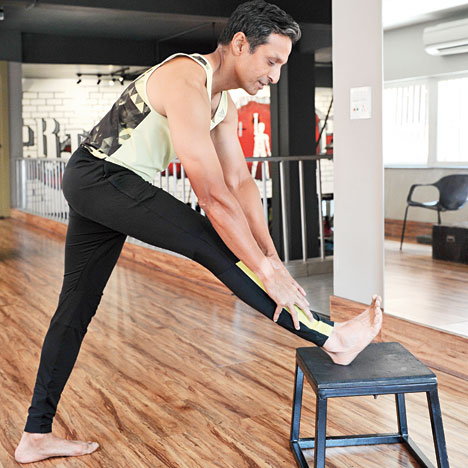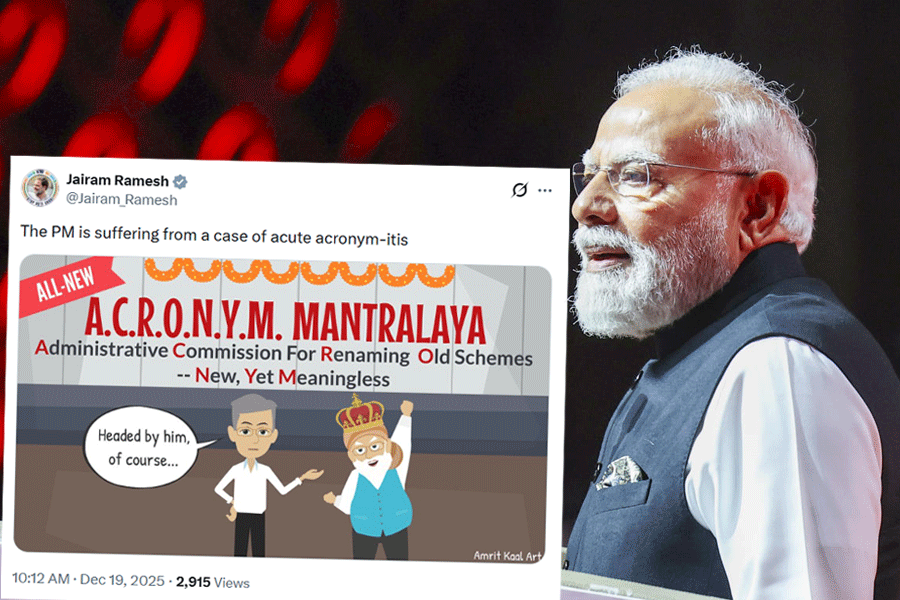Iwish I had a penny for every time I come across a bad knee, almost each one of them accompanied with the owner’s belief that “accidents happen”, “Oh, wear and tear is inevitable”, and knees are “fragile”. Admittedly, you can damage a patella when suddenly stopping and turning to change direction on the sports field, or rip out an ACL (anterior cruciate ligament) during a tumble or tackle. The football fields, squash courts and skiing slopes are notorious for throwing up traumatic events for the knees. But one must accept that these “accidents” are often misunderstood and misconstrued as mishaps or misadventures. Such occurrences damage the knees merely in a secondary way, much as a hammer can cause injury to a careless carpenter’s thumb.
It is my firm belief born out of years of clinical practice that if the knee was properly aligned, the footballer would have stopped on a dime, turned, kicked and scored a goal while the skater could have waltzed off the rink floor even after the unfortunate twist or slip.
The jury in me is still out on whether the knee is a complex joint doing the simple function of synchronising the hip and the ankle, or a simple joint performing a complex job. The vital point is that both are true! What is, however, not true at all is that knees are “fragile” and that this part of the human anatomy is just sitting and waiting for an accident to happen, a time bomb set to explode any minute.
“Knees rarely have a problem if they are aligned and allowed to work in association with the ankles and hips,” says pain management expert Peter Egoscue in his revolutionary work, Pain Free.
Since knees are damaged more than any other joint, a whole industry has developed to service them and eliminate pain. Knee surgery is the magic camouflage of many orthopaedics. Hospitals love to advertise the cutting-edge surgeries they do and the top-class prosthetics they use to replace old, worn-out knees. “Repair or even replace the joint and live happily” is the message.
The reality is that we can’t count on technology to give total mobility, or even adequate partial mobility to the functionally immobile. Besides, the body’s metabolic system will not function without adequate movement.
“Symptomatic events are variable — slipping in the shower, tripping over a broken tile, falling on the tennis court, and so on. What is constant is the knee dysfunction that existed prior to the event and the inevitable damage it causes sooner or later,” says Egoscue.
COMMON INJURIES
There’s a whole bunch of injuries that can happen to the knee. Some of the most common ones are:
MENISCUS TEARS: The disc-shaped cartilage between the thigh and the knee bone often tears as a result of being compressed as the knee joint rotates. The result is a sharp, biting pain.
OSTEOARTHRITIS: Decades of joint stress can result in a significant loss of cartilage, often on the inner and outer edges of the knee, causing bone-on-bone contact and deep ache or sharp pain.
TORN ANTERIOR CRUCIATE LIGAMENT: The connective tissue in the middle of the joint can rip if the knee goes beyond its normal range of motion. A popping sound usually accompanies a tear and a swelling will occur within a few hours.
TORN MEDIAL COLLATERAL LIGAMENT: This is a ligament in the inner portion of the joint. Stress on the lead knee through impact can rip the tissue. This injury usually heals without surgery. Swelling, soreness and bruising on the inside portion of the knee are common symptoms.
CHONDROSIS: A type of arthritis that occurs when articular cartilage, usually behind the knee, deteriorates. It’s usually accompanied by a dull, achy pain and swelling. While I have described these “ailments” of the knee, these are really not one-time ill-fated events but a result of minor (or even major) dysfunctional conditions that carry on from symptomatic events to symptomatic events right to the brink of catastrophe. Then, one fine day, the last straw of the camel’s
back just snaps!
TONE UP
(All stretches to be held for 20-30 seconds)

Hamstring stretch
The posterior thigh muscles help to flex the knee in contraction and extend the knee when stretched. Compromised hamstring length can adversely affect both these functions and damage the knee. Hold the position as shown, trying to keep the extended knee as straight as possible and the heel firmly placed on the bench.

Hip and calf flexibility
Increased hip and calf flexibility reduces the shearing force on the knee. On a bench, or raised platform, hold the demonstrated position, pushing the hips forward and straightening the grounded leg. Make sure the knee of the raised leg never crosses the ankle in a vertical plain.

Thigh strengthening lunges
Weak hamstrings and quadriceps (thigh muscles) lead to instability in the knees. Keeping the spine straight, slowly drop the trailing knee almost towards the floor. Rise and repeat till you reach momentary fatigue; 10-15 repetitions; 2-3 sets recommended.

Pictures: Pabitra Das
Hip flexor stretch
Tight hips will increase load on the knees. Long hours of sitting is notorious for tightening the muscles of the hip. Hold this position as shown, thrusting your hips towards the chair.
Ranadeep Moitra is a strength and conditioning specialist and corrective exercise coach











